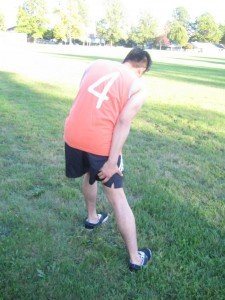A hamstring is a muscle found in the back part of the thigh which straightens and rotates the leg and bends the knee. An individual with a torn hamstring can lead to discomfort when the leg is straightened out. In severe cases, walking can be difficult process.
Proper treatment of a torn hamstring is vital not only to prevent severe injury but also hasten the recovery period. The PRICE method (prevent, rest, ice, compression, elevation) is the commonly used treatment measure for an individual with a torn hamstring.
Protection
The affected hamstring should be properly protected in order to prevent further injury. Remember that this is the initial step in treatment. Regardless of the activity that instigated a torn hamstring, it must be avoided until the muscle has fully healed.
Rest
The individual should take a break from any form of activity by resting. Once the individual experiences pain in the hamstring, he/she must stop the activity right away. Take note that this is simply how the body signals that there is something wrong. By resting the muscle, it promotes the healing of the muscle as well as for fast recovery of the injury.
Application of ice

You can apply an ice pack and compression to the torn hamstring to reduce the sore swelling and promote blood flow to the damaged muscle. The general rule when applying cold is 20 minutes on and 20 minutes off during the initial 24 hours after the injury.
You have to protect the skin by covering the ice pack or cold pack using a towel or cloth and then wrap around the affected leg with an elastic bandage to provide compression. Take note not to wrap too fitted since it can disrupt the circulation. Once the swelling and pain subsides, stop the cold compression.
Elevation
It is important to elevate the damaged hamstring to minimize the swelling and prevent the pooling of blood. This can be carried out not only during the application of ice and compression, but also encouraged as often as possible.
The ideal way to elevate the affected muscle is to raise the foot using a stool or place cushions or pillows under the foot or knee while the individual is lying down. By raising the injury, it minimizes the excruciating sensation that manifests once blood is propelled into the damaged muscle.
Important tips to bear in mind
If an individual is suspected with a more than minor injury due to the significant swelling or inability to place weight on the leg, it is best to consult a doctor right away. Within 48-72 hours, if the torn hamstring was properly managed, the injury can fully recover.
